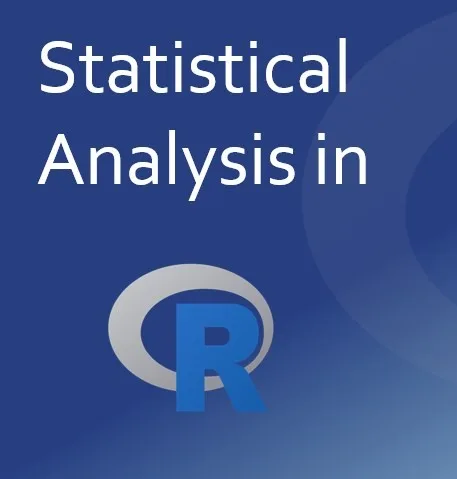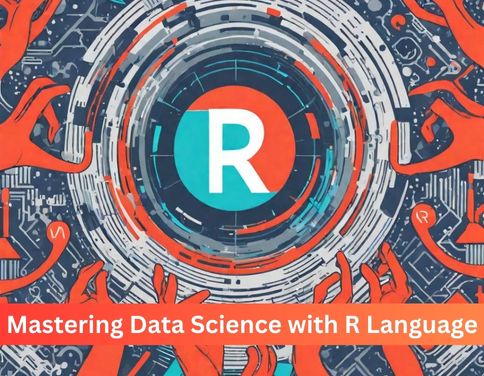Data science is a multidisciplinary field that combines elements of statistics, computer science, and domain expertise to extract meaningful insights from data. It involves processes such as data collection, cleaning, analysis, and interpretation with the ultimate goal of informing strategic decisions and solving complex problems.

At its core, data science leverages advanced algorithms and statistical models to uncover hidden patterns, trends, and correlations within large and complex datasets. These insights can be used to optimize processes, enhance customer experiences, drive innovation, and gain a competitive edge in today’s fast-paced business landscape.
Importance of R language in data science

Among the tools available to data scientists, the R language stands out for its rich ecosystem of packages, strong statistical capabilities, and intuitive syntax. Originally developed by statisticians, R has evolved into a comprehensive programming language specifically designed for data analysis and visualization.
One of the major advantages of R is its extensive collection of packages, which cover a wide range of statistical methods, machine learning algorithms, and data visualization techniques. These packages facilitate data scientists to tackle diverse challenges and explore complex datasets with ease.
Furthermore, the syntax of R is highly expressive and designed to facilitate data manipulation and exploration. Its interactive nature allows users to experiment with data in real time, making it ideal for exploratory data analysis and iterative modeling.
Apart from its technical capabilities, R also boasts a vibrant and supportive community of users and developers. This thriving ecosystem ensures that users have access to resources, tutorials, and forums where they can seek guidance, share insights, and collaborate on projects.
Installation and Setup
First things first let’s get R up and running on our computer. Don’t worry, it’s easier than you might think! Simply visit the official R website and download the latest version of the software. Once it’s installed, you’re ready to start exploring.

Basic syntax and data structures

Now that you’ve installed R, it’s time to become familiar with its basic syntax and data structures. R uses a simple but powerful syntax that makes it easy to write and understand code. Whether you’re an experienced programmer or a complete novice, you’ll find the syntax of R intuitive and straightforward.
In addition to its syntax, R also comes with a variety of built-in data structures, such as vectors, matrices, and data frames. These data structures allow you to store and manipulate data in a flexible and efficient way, making R the perfect tool for all your data analysis needs.
Working with variables and data types
Once you’ve mastered the basics of R syntax and data structures, it’s time to start working with variables and data types. In R, variables are used to store and manipulate data, allowing you to easily perform calculations and transformations.
R supports a wide range of data types, including numeric, character, and logical values. Whether you’re working with numbers, text, or Boolean values, R has you covered.
In addition to its built-in data types, R also allows you to define your own custom data types using classes and objects. This powerful feature allows you to create complex data structures and organize your code in a modular and reusable way.
R-based Data Analysis and Machine Learning
Statistical Analysis with R

In this section, we highlight the powerful capabilities of R for statistical analysis. R provides a comprehensive toolkit for both descriptive and inferential statistics. Whether you’re calculating the mean and standard deviation or performing hypothesis testing and regression analysis, R offers a wide range of functions and packages to suit your needs. From exploring data distributions to assessing relationships between variables, R empowers data scientists to uncover valuable insights through rigorous statistical analysis.
Data Visualization

Data visualization is an important aspect of data science, and R excels in this area. With intuitive plotting functions and customizable graphics, R allows users to create compelling visualizations that effectively communicate insights from data. Whether you’re creating simple histograms and scatter plots or complex heatmaps and interactive dashboards, R provides tools to transform raw data into informative visual presentations. Through elegant and practical visualizations, R enables data scientists to express complex ideas and trends in an engaging way.
Machine Learning with R

Machine learning is at the forefront of contemporary data science, and R provides a rich ecosystem for building and deploying machine learning models. From classification and regression to clustering and dimensionality reduction, R offers a diverse range of algorithms and techniques to tackle a wide range of machine-learning tasks. With a user-friendly interface and comprehensive documentation, R simplifies the process of developing and deploying machine learning models, empowering data scientists to leverage the full potential of artificial intelligence in their analyzes and applications.
Advanced Topics
In the field of data science, advanced topics open up exciting new avenues for in-depth exploration and insight. Time series analysis allows us to uncover patterns and trends in data over time, which is essential for predicting future outcomes in fields such as finance, weather forecasting, and stock market analysis. Text mining and natural language processing enable us to extract valuable information from unstructured text data, enabling sentiment analysis, topic modeling, and even chatbot development. Meanwhile, web scraping and API integration provide access to a vast range of data sources on the web, from social media platforms to government databases, allowing data scientists to gather, analyze, and derive meaningful insights from diverse data streams. Makes you strong. Embracing these advanced topics not only enriches our understanding of data science, but also gives us powerful tools to tackle complex real-world challenges.
Follow Us On Instagram Follow Us On XAlso read: Unlocking Insights: The Journey of a Data Science Degree


[…] Also read: Mastering Data Science with R: Unveiling the Power of the R Language […]